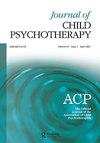Autistic twisted loops
IF 0.8
Q4 PSYCHOLOGY, CLINICAL
引用次数: 0
Abstract
ABSTRACT The paper describes a deceptive kind of autistic encapsulation, charact-erised by pseudo-internal space and distortions in the normal development of psychophysical space. It introduces the metaphor of loops as spatial-temporal organisations that illuminate three aspects of autistic encapsulation, two of which were first described by Frances Tustin. Three types of loops – simple, twisted and double-twisted – are explored. The paper delineates the double-twisted loop as an additional and more complex manifestation, typical to post-autistic organisation. Here, symbolic thinking and communication function as a disguise, obscuring the child’s trajectory on an infinite continuum that folds around itself, thus denying the potential for separateness and preventing the accumulative realisation of mental space. Using two clinical vignettes, the author shows how such a presentation leaves the therapist in danger of being tempted by the child’s pseudo-internal world, while remaining dissociated from their developmental needs.自闭扭环
摘要:本文描述了一种具有欺骗性的自闭症封装,其特征是内在空间的伪性和心理物理空间正常发展的扭曲。它引入了循环作为时空组织的隐喻,阐明了自闭症封装的三个方面,其中两个是由Frances Tustin首先描述的。探讨了三种类型的环-单环、双环和双环。这篇论文将双扭环描述为一种额外的、更复杂的表现,是自闭症后组织的典型表现。在这里,象征性思维和沟通作为一种伪装,模糊了孩子在无限连续体上的轨迹,从而否认了分离的可能性,并防止了心理空间的累积实现。作者使用两个临床小插曲,展示了这样的表现如何使治疗师处于被儿童的伪内在世界诱惑的危险之中,同时仍然与他们的发展需求分离。
本文章由计算机程序翻译,如有差异,请以英文原文为准。
求助全文
约1分钟内获得全文
求助全文
来源期刊

JOURNAL OF CHILD PSYCHOTHERAPY
PSYCHOLOGY, CLINICAL-
CiteScore
0.70
自引率
50.00%
发文量
46
期刊介绍:
The Journal of Child Psychotherapy is the official journal of the Association of Child Psychotherapists, first published in 1963. It is an essential publication for all those with an interest in the theory and practice of psychoanalytic psychotherapy and work with infants, children, adolescents and their parents where there are emotional and psychological problems. The journal also deals with the applications of such theory and practice in other settings or fields The Journal is concerned with a wide spectrum of emotional and behavioural disorders. These range from the more severe conditions of autism, anorexia, depression and the traumas of emotional, physical and sexual abuse to problems such as bed wetting and soiling, eating difficulties and sleep disturbance.
 求助内容:
求助内容: 应助结果提醒方式:
应助结果提醒方式:


